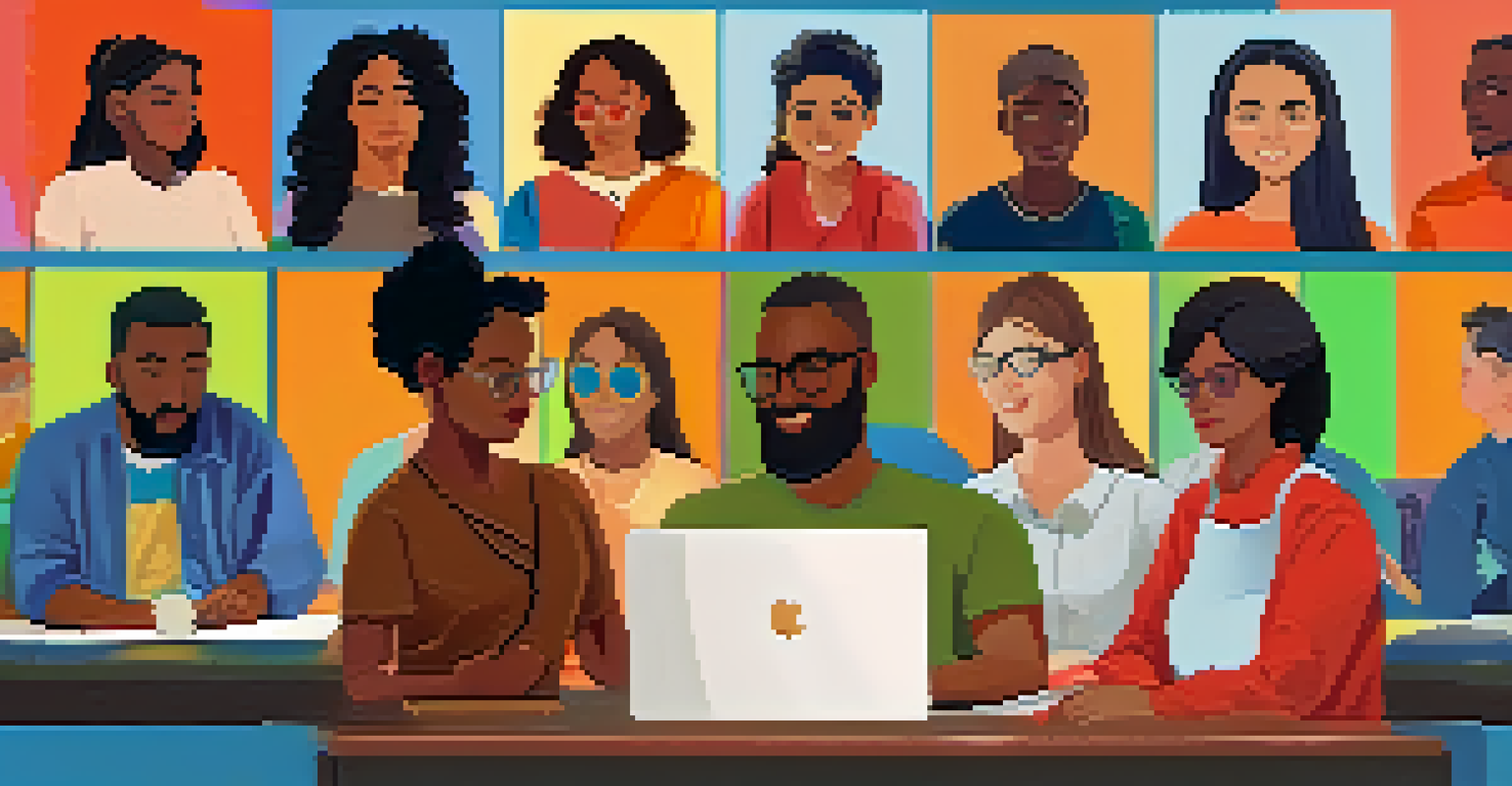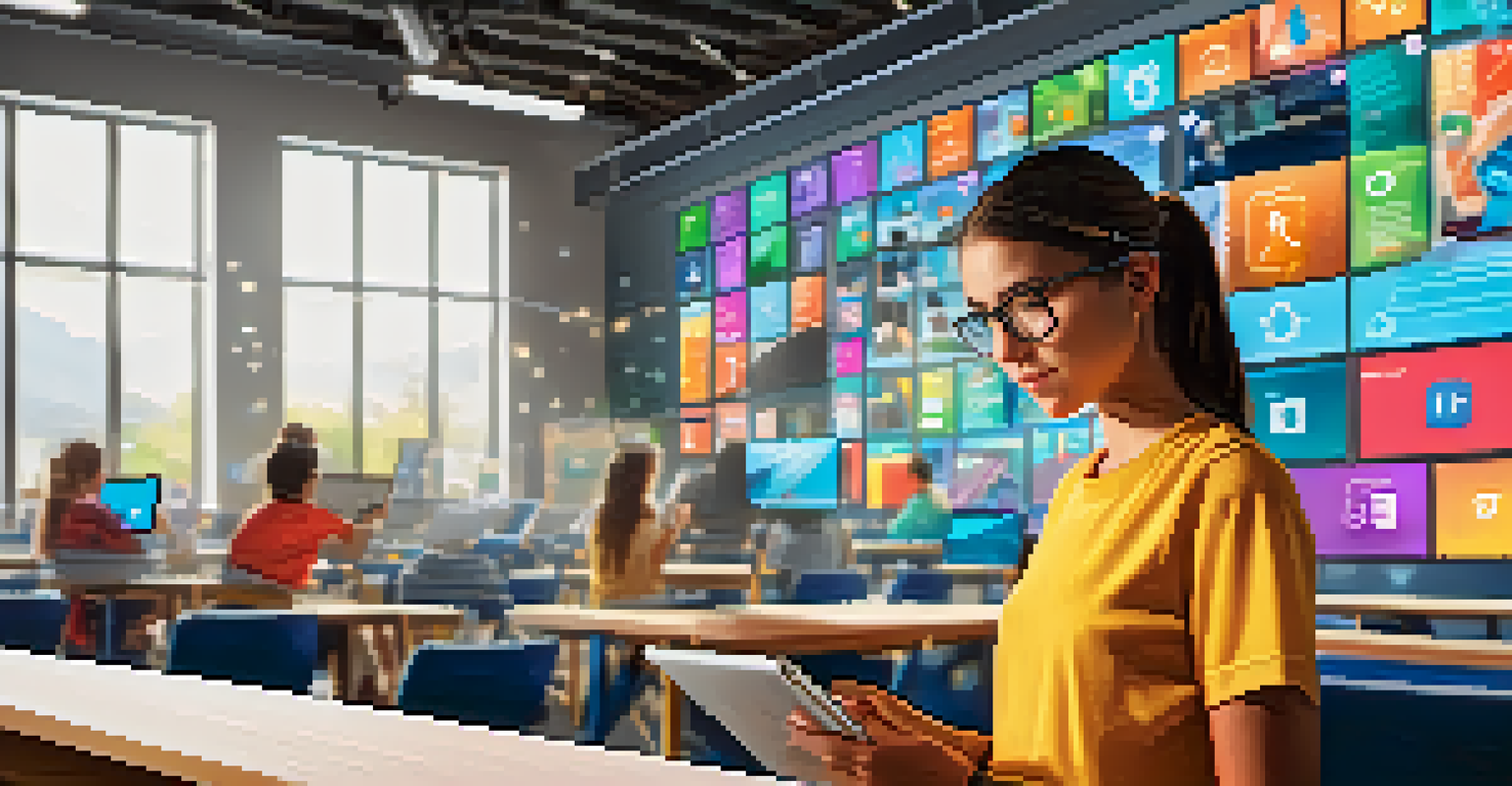The Benefits of Asynchronous Learning in Online Communities

Understanding Asynchronous Learning in Online Communities
Asynchronous learning refers to educational activities that don't require participants to be online simultaneously. This model allows learners to access materials, engage in discussions, and complete assignments at their own pace. In online communities, this flexibility caters to diverse schedules, making education more accessible for everyone involved.
Asynchronous learning allows students to take control of their own education, accommodating their unique schedules and learning styles.
One of the most significant advantages of asynchronous learning is the ability to revisit materials. For example, a student might find a lecture particularly challenging and can pause, rewind, and rewatch it until they grasp the concepts. This self-paced approach fosters a deeper understanding and retention of information, which is often difficult to achieve in synchronous settings.
Additionally, asynchronous learning encourages thoughtful participation. Unlike live discussions where responses can be rushed, learners have the time to reflect on their contributions. This deeper level of engagement often results in more meaningful interactions and a richer learning experience within the online community.
Flexibility: A Key Advantage of Asynchronous Learning
Flexibility is perhaps the most attractive feature of asynchronous learning. Students can choose when and where they study, accommodating personal commitments such as work or family. This adaptability is especially beneficial for adult learners or those balancing multiple responsibilities.

Imagine a busy parent who can only study late at night after the kids are asleep. Asynchronous learning allows them to engage with course materials during their available time, rather than being tied to a rigid class schedule. This flexibility not only enhances participation but also helps maintain a healthier work-life balance.
Flexibility in Learning Schedules
Asynchronous learning allows students to study at their own pace, accommodating personal commitments and diverse learning styles.
Moreover, this model accommodates various learning styles and paces. Some learners thrive in environments where they can take their time, while others prefer to move quickly through materials. Asynchronous learning provides a tailored experience, ensuring that every individual can navigate their educational journey in a way that works best for them.
Enhanced Accessibility for Diverse Learners
Asynchronous learning significantly enhances accessibility for diverse learners, including those with disabilities or those who speak different languages. For instance, captions or transcripts can be provided for video lectures, making content more reachable for students with hearing impairments. This inclusivity fosters a richer learning environment.
The beauty of online learning is that it gives learners the flexibility to learn at their own pace, fostering deeper understanding and retention.
The model also benefits non-native speakers who may need extra time to process information. They can pause recordings, utilize translation tools, and engage with materials without the pressure of keeping up with peers in real-time discussions. This approach cultivates a sense of belonging and confidence, which is crucial for effective learning.
Additionally, asynchronous platforms often provide diverse resources, such as forums and discussion boards, allowing learners to connect in various ways. This variety encourages interaction among students who might otherwise feel isolated, creating a vibrant online community where everyone can thrive.
Promoting Self-Directed Learning Skills
One of the hallmark benefits of asynchronous learning is the promotion of self-directed learning skills. In this framework, students take charge of their educational journey, setting goals, managing their time, and finding resources independently. This autonomy builds essential skills that extend beyond the classroom.
For example, a learner might decide to explore additional materials on a topic that interests them, taking the initiative to enhance their understanding further. This self-motivated approach not only deepens knowledge but also instills a sense of ownership over their education, which can be incredibly empowering.
Enhanced Accessibility for All
This learning model improves accessibility for diverse learners, including those with disabilities and non-native speakers, fostering an inclusive environment.
Moreover, as students learn to navigate various online tools and platforms, they develop technological proficiency—a vital skill in today's digital world. This blend of self-direction and tech-savviness prepares learners for future academic and professional endeavors, making them more adaptable in a rapidly changing environment.
Encouraging Collaboration in Online Communities
Asynchronous learning fosters collaboration within online communities by providing various platforms for discussion and teamwork. Discussion boards, group projects, and peer reviews allow learners to engage with one another without the constraints of fixed schedules. This flexibility opens the door to diverse perspectives and ideas.
Consider a group project where students from different time zones contribute at their convenience. They can share insights, collaborate on tasks, and provide feedback without the pressure of synchronous meetings. This asynchronous collaboration not only enhances the final product but also cultivates a sense of community and shared purpose among participants.
Furthermore, this method encourages learners to take responsibility for their contributions. Knowing that their input will be reviewed and valued by peers fosters a sense of accountability and motivation, driving them to perform at their best. As a result, the collaborative experience becomes richer and more rewarding for everyone involved.
Building a Global Community Through Asynchronous Learning
Asynchronous learning transcends geographical boundaries, allowing individuals from all over the world to come together in a shared learning environment. This global reach not only enriches discussions but also fosters cross-cultural understanding among participants. Learners can gain insights into different perspectives, enhancing their overall educational experience.
For instance, a student in the U.S. might collaborate with peers in Europe or Asia, sharing unique viewpoints and experiences that shape their understanding of a subject. This diversity of thought encourages critical thinking and helps learners become more open-minded and adaptable in a globalized world.
Global Collaboration Opportunities
Asynchronous learning connects individuals from around the world, promoting cross-cultural understanding and enhancing the overall educational experience.
Moreover, the ability to interact with a wide range of cultures and ideas prepares students for the increasingly interconnected workforce. As they learn to navigate diverse opinions and collaborate effectively, they develop skills that are invaluable in today's job market, making asynchronous learning a vital stepping stone for future success.
The Role of Technology in Asynchronous Learning
Technology is the backbone of asynchronous learning, enabling access to a wealth of resources and facilitating communication among learners. Platforms like learning management systems (LMS) provide a structured environment for course materials, discussions, and assessments. This centralization simplifies the learning process, making it more efficient for everyone involved.
Additionally, various tools such as video conferencing, social media groups, and collaborative documents enhance the learning experience. Students can engage with content and one another in various ways, catering to different learning preferences and styles. This technological integration creates a dynamic educational landscape that keeps learners engaged and motivated.

Furthermore, as technology continues to evolve, asynchronous learning will likely adapt and expand. Innovations like artificial intelligence and virtual reality could further enrich the learning experience, offering personalized pathways and immersive environments. Embracing these advancements will ensure that asynchronous learning remains relevant and effective in the future.